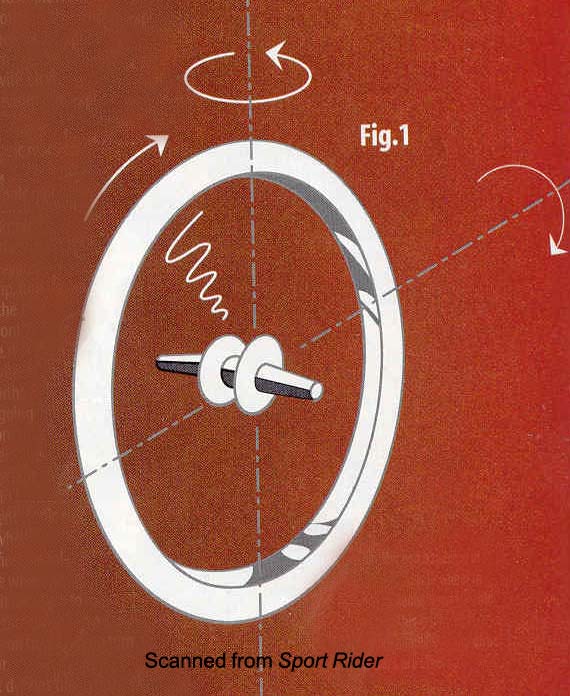The first method of steering a motorcycle at high speeds is called countersteering. Basically, the idea is that the rider turns the handlebars in the opposite direction of how the bike needs to turn. For example, the rider would push on the left handlebar (turning the bars to the right) in order to make a left turn. This may seem like a foreign concept at first, but it makes sense in the context of gyroscopic motion. Consider a bicycle wheel:

The effects of gyroscopic precession can be felt when the wheel is held by the axle in the position shown, spun, and then turned sharply to the left or right. If the wheel is turned to the left, the top will twist to the right, pushing the bottom to the left. The same applies to a motorcycle when the wheels are spinning very quickly and the machine is turned. Turning the handlebars to the left would force the top of the wheel to move to the right, thus leaning the motorcycle in the opposite direction that the wheel was turned.